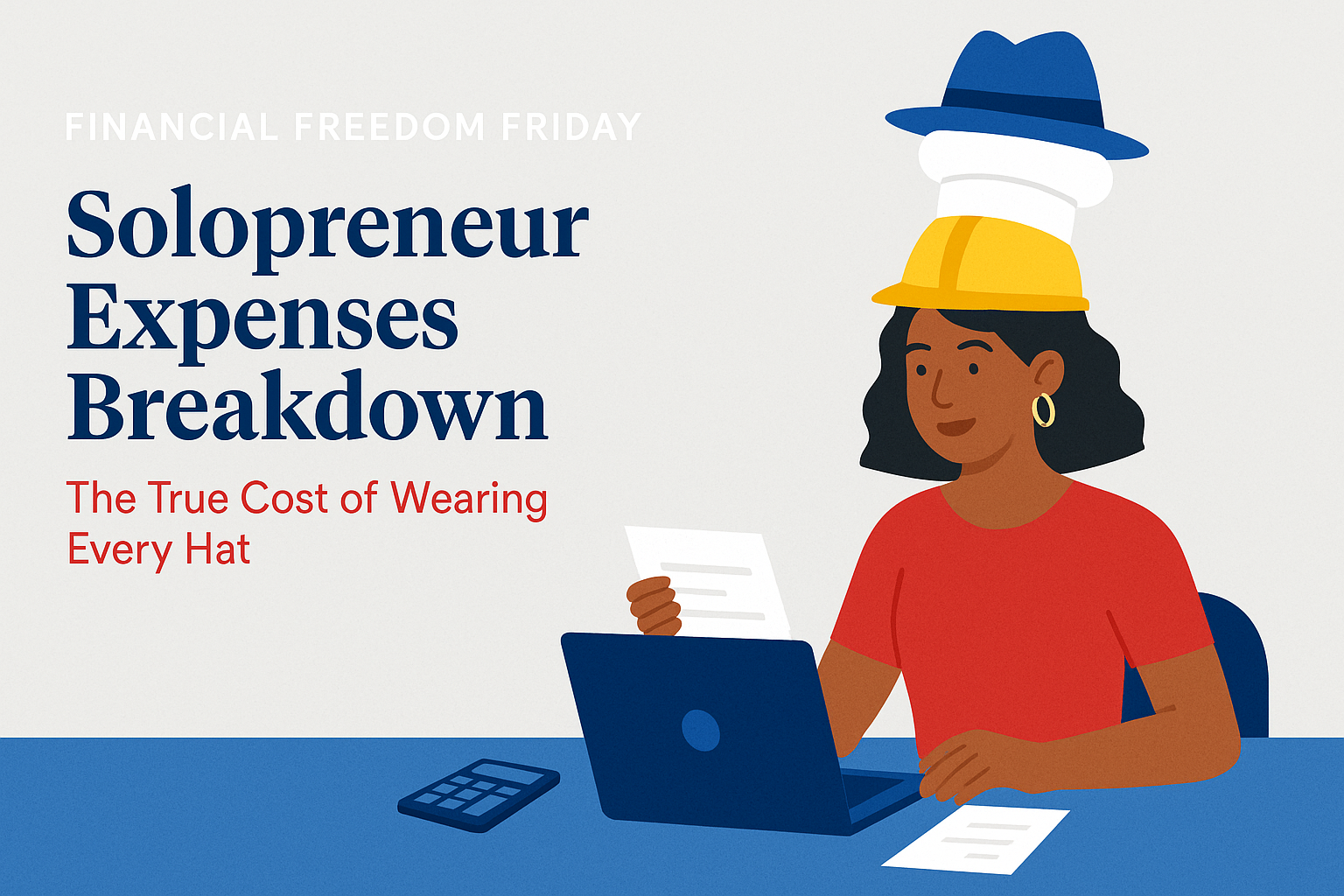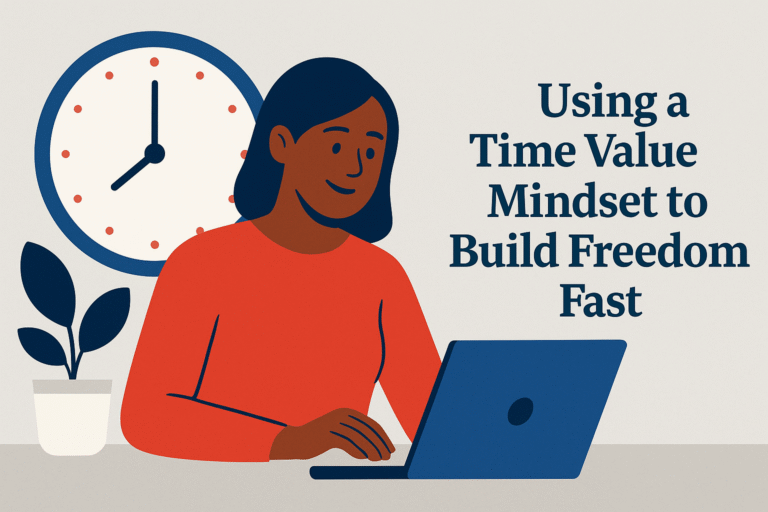Startup Saturdays
Starting a business while working full time can feel like trying to build a second life in the margins of your current one. You’ve got energy in short supply, responsibilities you can’t set down, and maybe a tug in your chest that won’t let go—that quiet urge to build something of your own.
I know that tension well. When I revived Backbone America, I was working full time in local government. It wasn’t a bad job—good pay, hybrid schedule, solid benefits. But it wasn’t freedom. I wanted the ability to choose how I spent my days, to travel, to create, to lead. Not later—now. So I started small. Quietly. Systematically.

This post is for you if you’re in that in-between space—grateful for your job but hungry for more. I’ll walk you through what worked for me, what I learned the hard way, and how you can start building something meaningful without setting your whole life on fire. No hype, no pressure—just the truth about what it takes to do this in real life, one deliberate step at a time.
And if you’re still unsure where to start—or worried that your business dream doesn’t fit the life you actually have—the Business Clarity Blueprint walks you through how to define what freedom really means to you, reclaim your time, and choose a business model that matches your energy. It’s not about hustling harder. It’s about building smarter from day one.
The Case for Starting While Employed
There’s a quiet kind of wisdom in starting a business while working full time. You’re not playing small—you’re playing smart. For most of us, walking away from a steady paycheck isn’t an act of courage; it’s an act of chaos. The truth is, you don’t need to quit your job to prove you’re serious. You prove it by showing up every day after work. By choosing progress over perfection. By using what you have to create what you want.
When I came back to Backbone America, I didn’t start with a grand launch or massive audience. I started with two hours a day—before or after work—depending on what the week required. Those two hours didn’t feel like much at first, but over time, they compounded. Ideas sharpened. Offers took shape. Confidence grew. And eventually, income did too.
If anything, having a job can give you an advantage: financial stability, structure, and constraints that force clarity. Instead of chasing everything, you have to focus on what actually matters. That’s not a limitation—it’s leverage.
Shift Your Mindset: From Employee to CEO-in-Training

One of the hardest parts of this journey—at least for me—was learning to trust my own decisions. As a full-time employee, you’re used to receiving direction. As a business owner, you create the direction. That transition can feel shaky, even disorienting. But it’s also empowering.
When I reclaimed Backbone America, I had to unlearn the idea that productivity only counted if someone else saw it. That progress was only real if it came with a paycheck or a performance review. The truth is, every time I showed up to build something—no matter how small—it counted. Every two-hour block, every decision I made without asking for permission, was a brick in the foundation.
You don’t have to feel like a CEO to start acting like one. You just need to build the habit of showing up as the person you’re becoming.
Time Management for Part-Time Founders
Time is your most limited resource—and your most valuable one. When you’re building a business around a full-time job, you don’t need more hours. You need better leverage.
Start by getting honest about your bandwidth. Two hours a day might not sound like much, but over a week, that’s ten focused hours. That’s enough to validate an offer, publish a landing page, reach out to potential clients, or record a training. The key is claiming those hours with intention.
When I started rebuilding Backbone America, I used a simple weekly time block. I didn’t schedule every minute—just the windows where business-building would take priority. Usually that meant waking up early. Other times, it meant dedicating time during the weekends. But because the time was pre-decided, I didn’t have to wrestle with guilt or decision fatigue in the moment. I just got to work.
If you’re not sure where that time will come from, look closer. It’s often hiding in scroll time, Netflix nights, or weekend routines that aren’t moving you forward. You don’t have to give up your entire life—you just have to reclaim the parts of it that are leaking energy.
Start small. A single well-used hour beats five hours of busywork any day.
Pick the Right Business Model for Your Time and Skills

That’s why choosing the right model matters more than choosing the most popular one.
When I relaunched Backbone America, I knew I couldn’t afford to build a business that depended on me being “on” all the time. I needed something I could shape around my energy and schedule, not the other way around. That meant focusing on offers I could productize, systems I could automate, and formats that didn’t drain me.
If you’re still not sure what kind of business fits your life, the Business Clarity Blueprint can help you figure it out. It walks you through how to match your strengths and time constraints to a business model that’s both sustainable and scalable. No fluff—just clear steps to choose what works for you.
Because the right business won’t just make you money. It’ll give you margin, energy, and the room to keep going.
Keep It Lean: Tools, Tech, and Systems That Save Time
When you’re starting a business while working full time, the tools you choose can make or break your momentum. You don’t need a massive tech stack or expensive subscriptions. What you need is a lean, reliable system that keeps things moving—even when you’re not at your desk.
For Backbone America, that meant using automation early. I leaned on tools inside Zoho One—like Zoho Forms to gather information and Zoho Flow to connect platforms and automate handoffs. I didn’t try to build everything at once. I focused on the workflows that would save me the most time and added layers only when they made things simpler.
Here’s the principle I follow: if a task is repeatable, it should be automated. That includes lead capture, appointment scheduling, email sequences, and even product delivery. Every minute you automate is a minute you get back for strategy, creation, or rest.
And don’t worry if you’re not “techy.” Most of the tools I use now were things I had never touched before launching my business. I learned one at a time—always with an eye toward simplicity and sustainability.
Later, when you’re ready to scale, having those early systems in place will save you hours (and a lot of frustration).
Prepare Financially—But Don’t Wait Forever
Starting a business while working full time gives you a gift that most full-time entrepreneurs don’t have: a financial safety net. Your job doesn’t just pay the bills—it buys you time, space, and the ability to make smarter decisions instead of desperate ones.
But here’s the catch: that safety net can quietly become a hammock. If you wait until your business feels totally safe, you might never start. At some point, you have to decide to move with what you have—even if it’s not perfect yet.
When I restarted Backbone America, I treated my paycheck like my first investor. I used it to fund software tools, product development, and educational resources. But I set limits. I created a lean budget and tracked where the money went. Every dollar I spent was an intentional step toward building something sustainable—not just “nice to have” extras.
Think of your early financial plan in phases. What’s your minimum startup cost? What’s your break-even point? How much do you need to reinvest before you can start paying yourself? Clarity on those numbers helps you set real goals—not vague hopes.
And when the time does come to consider stepping back from your job, you’ll know exactly what financial signs to look for—because you planned for them from day one.
Know When You’re Ready to Scale or Quit
 Quitting your job isn’t the goal. Freedom is. And freedom doesn’t always mean walking away from a paycheck—it means having options. So how do you know when you’re ready to scale your business or consider stepping away from your job?
Quitting your job isn’t the goal. Freedom is. And freedom doesn’t always mean walking away from a paycheck—it means having options. So how do you know when you’re ready to scale your business or consider stepping away from your job?
Start by watching for traction, not just effort. Are you getting leads consistently? Have you found a product or offer that people are willing to pay for—without begging or discounting? Are you working with clients or making sales that don’t require your constant presence? These are signs your foundation is taking shape.
Here’s what might work for you: set clear benchmarks. That might be a monthly revenue target, a number of clients, or the ability to pay yourself a specific amount for three months straight. Whatever it is, make it measurable. Then, when the time comes to make a decision, you’ll be acting on data—not emotion or burnout.
You don’t have to leap. You can step. One solid move at a time.
Final Words: Build Smart, Stay Grounded
Starting a business while working full time isn’t about doing the impossible. It’s about doing what matters—and letting go of the pressure to do it all at once.
You don’t need to be everywhere. You don’t need to have everything figured out. You just need a next step that makes sense for you. Maybe that’s carving out two hours a day. Maybe it’s rethinking what freedom really means. Maybe it’s giving yourself permission to build slowly and sustainably—without burning out or blowing up your life.
Backbone America wasn’t built overnight. It was built in quiet hours, between meetings and on weekends, one choice at a time. And even now, it’s still growing—because I’ve learned to respect the pace of a part-time founder with a long-term vision.
You’re not behind. You’re not late. You’re building. And that’s enough.






